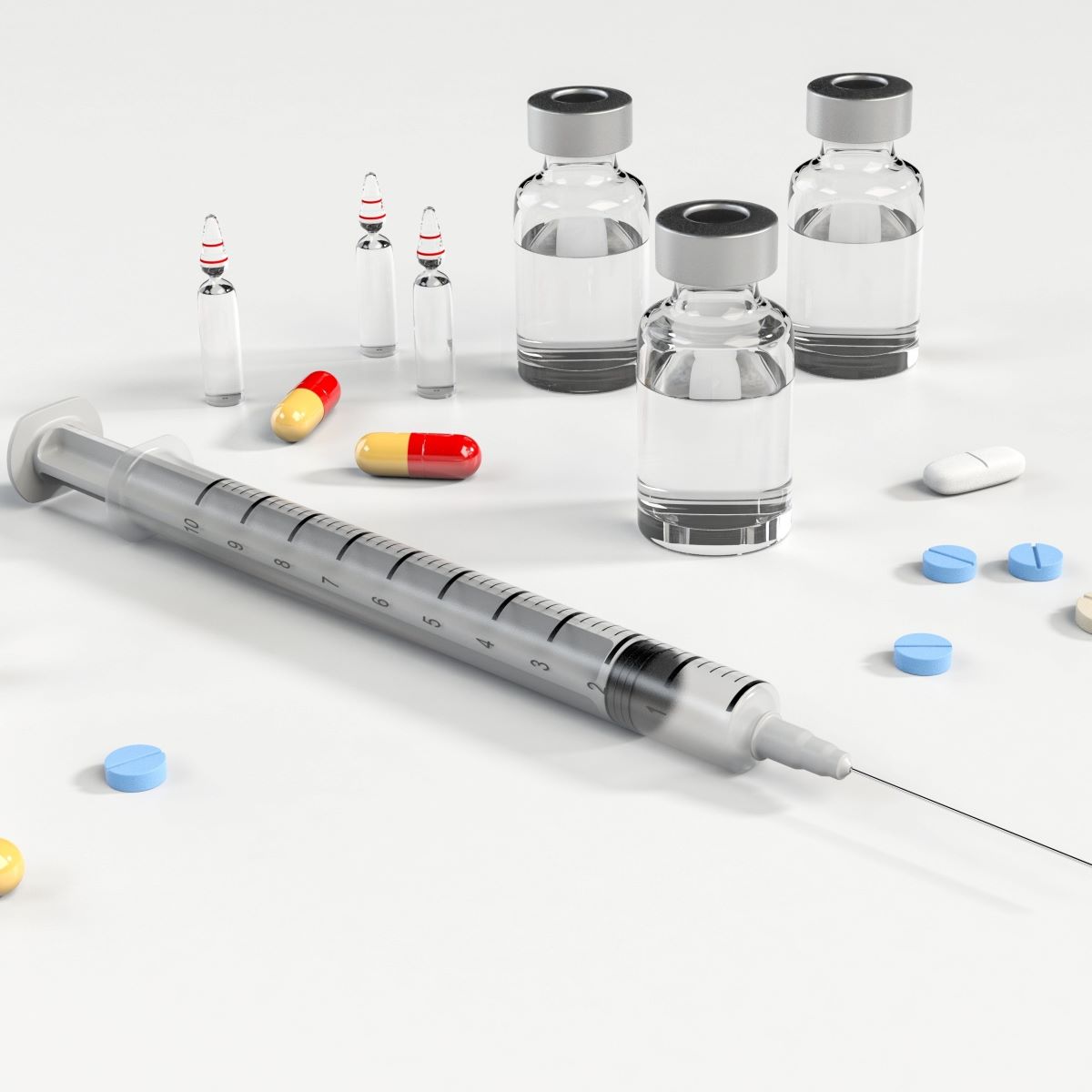by Lucy Rose
A few words before we start…

Firstly, I want to thank you for taking the time to read the latest entry of my series, Transgendered Substantiation. The series has been adapted from blogs I wrote for my website during my transition, based on my thoughts and feelings at the time. They almost represent, then, a time capsule for that period of my life. I have done my best to edit and update them for this publication, but some areas may be out of the date, especially regarding the administrative side, as some parts of the process may have changed since I went through it myself.
My ultimate aim with this series is to help people by shedding a light on the transition process. While everyone’s experiences are different, and this is but one person’s perspective, if this is something you are going through yourself, it is my hope that it helps you know that though it may be a daunting process, it is not insurmountable and there is nothing that cannot overcome. Or, if you are a friend or loved one of someone going through the process, it helps you understand what they may be thinking or feeling or the challenges they are facing.
With everything said, please enjoy this week’s entry.
Volume 13 – Hormone Treatment
In order to write this series, I had to do a lot of soul-searching; a lot of things to sort out in my head: emotions, reasons, my failings . . . and even the more basic matter of figuring out dates and timelines. But one thing that struck me is just how long a process it’s been. I remember first seeking referral in August 2015; it was around the same time I went to perform at Edinburgh Fringe. I even found a review of our show to confirm this date. And I went to my second consultation at the GIC, the time when I was to be referred my hormone treatment, in February 2018. That’s a difference of 30 months. Or nearly . . . 1000 days.
I did a post about the Wasted Year, about the how to fill and make the best of the time that’s paid in performance to the transition process, and while I did give advice about coming out to those remaining parties, organising yourself in preparation, and living as best you can as your preferred gender to get into the habit, looking back at these past 30 months, I’m split about how I feel about it: whether it’s a happy nostalgia for how far I’ve come, or grief at how much fuller that time could have been were I not subject to this inefficient process. I don’t think there’s any individual solution beyond that of a systematic overhaul and investment to decrease waiting times. But for those who’ve already paid the toll, who are already stuck on the ferry, slowly freezing in Cocytus’s dead waters, I can’t think of a way to get that time repaid.
I’m crying now as I write this. No great tears, just a gentle mourning. How much have I missed? How many small interactions and subtle moments? The tropes of youth and teenage years. The comfortable family unit. The late-start to a game everyone else has so far enjoyed. I fear I’ll become victim to my logarithmic brain. If you track the years of your life, within each year taking a proportional fraction of the total, then the middle of your life, taking an average of around 75 years, occurs in your early twenties. Am I past the half-way point now? Have I missed out on the best moments I could have had due to a quirk in my brain and a faulty system that was supposed to help me?
There’s no way I can tell. I’ll never be able to know the outcomes of the ‘What if?’ inquiries and I know it’s fruitless to think of them, but it’s impossible not to contemplate the happy days I could have had. The pain comes in recollection, how those 1000 days are gone in a struggling finger-click, unfulfilled and unexplored. Precious days with without my unique mark upon them, and even now I’m still not through. I have failed and I have been failed.
I guess the only solace I can give myself is to realise that while memory might well be logarithmic, time itself is linear, one second upon one second, relentless. Come the end of all this, I’ll finally have the chance to fill them as much as I can with novel and interesting experiences and make each second stick perfectly in my imperfect mind.
But before I get there, there’s the turmoil of hormones. As I write this, I’ve been through nearly two years of the treatment and their effects have filled a whole other series on my website, so to speak of the details here would be an exercise in futility. However, I can write about what you can expect, based upon the notes given by the GIC.
Before I do, however, I will say that it’s natural to be scared. My first puberty was eight years of hell, and on the precipice of Round 2, being someone who likes predictability faced with a complete unknown, was terrifying. I couldn’t picture a life beyond that appointment in February. And yet my fear was overridden by my impatience. A greyhound in the slips, waiting for the off.
So, what’s the barrier to entry?
Of course, all the information to come is based upon the male-to-female transition, taken from a pamphlet I was given at the GIC after my first consultation, but I nonetheless advise you research the expected changes for your situation regardless. Hormones affect everyone differently and you may have a different journey to mine.
The Cliff-Notes
The hormone treatment uses oestrogen tablets taken daily, often in conjunction with testosterone blocker injected every three months. This will cause infertility, so gamete storage beforehand is recommended. Hormones are only recommended after being seen by two psychiatrists or psychologists to ensure it’s the correct treatment as some of the changes are irreversible. Blood tests are taken to make sure that dosages are correct. Alternatives to oestrogen, for those who react badly to the treatment, experiencing nausea or headaches, are available.
The dose increases after the first three months of therapy. The idea is not to push too much into the system too quickly as it can cause trouble later down the road. Puberty takes time, and this treatment aims to mimic that process.
The blocker itself overstimulates a gland in the brain that controls the testicles, so may causes an initial increase in libido before going to sleep. To counteract this, cyprotene is given for the first two weeks. For those over 45 years old, this may not be as big a problem and the oestrogen on its own should be enough to control things. Treatment stops temporarily six weeks prior and for two weeks after any genital reconstructive surgery in order to prevent possible complications with deep venous thrombosis (DVT).
The general effects of hormone treatment include:
Facial Hair
You’ll find that your skin texture will become smoother and softer and an overall reduction in facial hair growth. This effect reaches its maximum four months into treatment. It’s rarely enough on its own to complete get rid of all your hair, so localised methods like electrolysis or laser treatment, as I covered in my post on Hair Removal, are recommended, though I still have to shave a couple times a week to catch the last few stragglers who’ve survived the process. Also, male pattern hair loss slows or stops completely, but any hair already lost won’t grow back.
Breast Development
Breast growth usually occurs in the 18-24-month range of puberty and the treatment aims to mimic this. The process will begin around 2-3 months into the treatment with the maximum effect being reached after the 2-year mark. Higher doses do not have any benefit and can cause irregular growth. However, breast growth is dependent upon the deposition of fat into the breast so if you’re thin, gaining some weight can help increase breast growth. The majority of trans-women choose to undergo breast augmentation surgery in addition to the treatment. If you decide to go this route, it may be wise to start saving early as it’ll most likely not be covered under the NHS scheme.
Body Fat Distribution
The proportion of fat in your body will increase during treatment, seen mainly about the hips and buttocks, giving a more rounded form to the body. I started the process thin and angular but have gained a subtle set of curves I really like, having gained about a stone or so in weight. This is accompanied by a decrease in muscle bulk and upper-body strength and definition.
Genital Effects
Before surgery, you can expect your testicles to become smaller and softer, and your libido and corresponding erections to decrease. Sperm production will slow and eventually stop. If you wish to store your sperm for use with a future partner or surrogate mother, this will be your last chance to do so. You’ll have to arrange this at a local fertility clinic. Please see my post on the Gender Identity Clinic for more information.
There are other effects, especially emotional and mental. Some testosterone blockers can cause depression, and puberty is naturally a difficult time, full of mood-swings and changes in personalities as the hormones balance themselves out. It’s expected the same will happen during this treatment. For a more in-depth look at these, please look at my current A Little Hormonal series on my website.
Some places may recommend Progesterone to help increase breast growth; however, in studies, this has been found to lead toward a greater risk of heart-attacks and breast cancer, so is warned away from by the GIC. There are, however, no published studies researching the risk of breast cancer in trans-women where Progesterone was not a present factor. There is also an expected increased risk of DVT due to the treatment. Studies have found it to be higher than the public average, but the clinics are aware of this and have treatment ready in the event it’s needed. Another side effect that can happen is overactivity in the pituitary gland producing prolactin (produced during pregnancy for breast milk). This can cause the gland to grow and press on nerves affecting vision; however, this has only been reported twice and they didn’t warrant removal from the treatment. To assure that any side-effects are caught and treated as needed, there are several visits to take tests on a variety of bases. These occur every 3-6, or 6-12 months prior to surgery, depending on the nature of the test, and every 12 months after the surgery.
And this covers all the information presented in the pamphlet given by the GIC. I’ll close by saying that hormones affect everyone differently and there’s no way to predict the outcomes based upon age, ethnicity, general health, etc. So, I wish good luck to anyone about to undergo the treatment and pray the changes come great and swift. It may seem scary, it may be difficult, but there is now an end in sight, and the chance to live and better and fuller life – as you. Implacably, uncontestably, you.
Summary Table of Effects
Effect Expected Onset Expected Maximum
Fat redistribution 3-6 months 2-5 years
Decreased muscle mass 3-6 months 1-2 years
Softening skin 3-6 months Unknown
Decreased libido 1-3 months 1-2 years
Decreased erections 1-3 months 3-6 months
Male sexual dysfunction Variable Variable
Breast growth 3-6 months 2-3 years
Decreased testicular volume 3-6 months 2-3 years
Decreased sperm production Variable Variable
Thin/slowed hair growth 6-12 months >3 years
Male-pattern baldness 1-3 months (loss stops) 1-2 years

